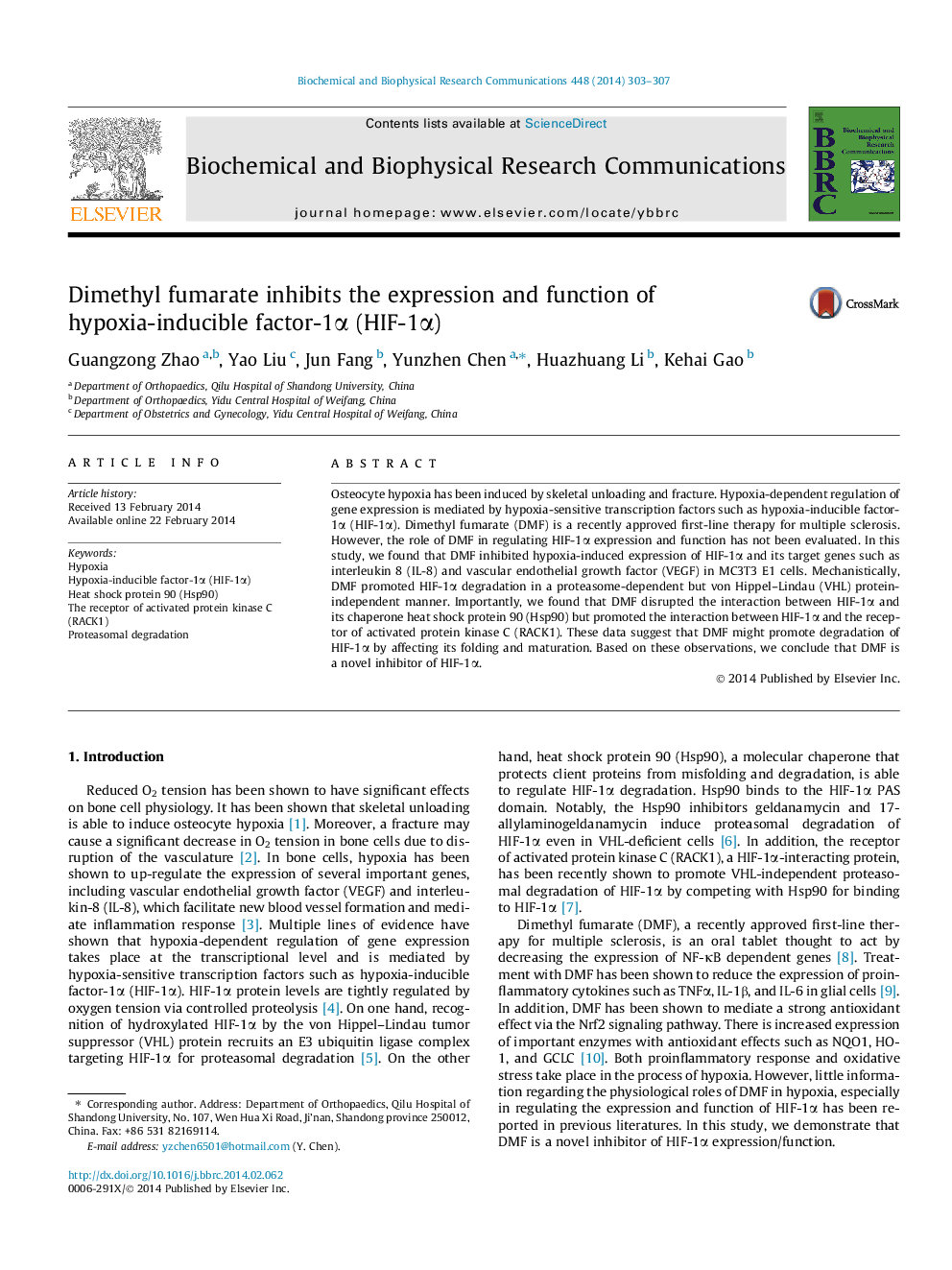| Article ID | Journal | Published Year | Pages | File Type |
|---|---|---|---|---|
| 1928504 | Biochemical and Biophysical Research Communications | 2014 | 5 Pages |
•DMF inhibits HIF-1α and its target genes IL-8 and VEGF induced by hypoxia.•HIF-1α degradation by DMF is mediated by the proteasome system independent on VHL.•DMF disrupts the interaction between HIF-1α and Hsp90.•DMF promotes the interaction between HIF-1α and RACK1.
Osteocyte hypoxia has been induced by skeletal unloading and fracture. Hypoxia-dependent regulation of gene expression is mediated by hypoxia-sensitive transcription factors such as hypoxia-inducible factor-1α (HIF-1α). Dimethyl fumarate (DMF) is a recently approved first-line therapy for multiple sclerosis. However, the role of DMF in regulating HIF-1α expression and function has not been evaluated. In this study, we found that DMF inhibited hypoxia-induced expression of HIF-1α and its target genes such as interleukin 8 (IL-8) and vascular endothelial growth factor (VEGF) in MC3T3 E1 cells. Mechanistically, DMF promoted HIF-1α degradation in a proteasome-dependent but von Hippel–Lindau (VHL) protein-independent manner. Importantly, we found that DMF disrupted the interaction between HIF-1α and its chaperone heat shock protein 90 (Hsp90) but promoted the interaction between HIF-1α and the receptor of activated protein kinase C (RACK1). These data suggest that DMF might promote degradation of HIF-1α by affecting its folding and maturation. Based on these observations, we conclude that DMF is a novel inhibitor of HIF-1α.
